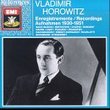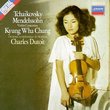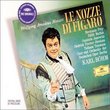| All Artists: Gustav Mahler, Michael Tilson Thomas, Michelle DeYoung, San Francisco Symphony Orchestra Title: Mahler: Symphony No. 3 [Hybrid SACD] Members Wishing: 1 Total Copies: 0 Label: San Francisco Sym Release Date: 11/9/2004 Album Type: Hybrid SACD - DSD Genres: Pop, Classical Styles: Vocal Pop, Symphonies Number of Discs: 2 SwapaCD Credits: 2 UPC: 821936000328 |
Search - Gustav Mahler, Michael Tilson Thomas, Michelle DeYoung :: Mahler: Symphony No. 3 [Hybrid SACD]
![Mahler: Symphony No. 3 [Hybrid SACD]](https://nationalbookswap.com/cd//l/64/4564/6104564.jpg) | Gustav Mahler, Michael Tilson Thomas, Michelle DeYoung Mahler: Symphony No. 3 [Hybrid SACD] Genres: Pop, Classical |
Larger Image |
CD DetailsSimilar CDs
Similarly Requested CDs
|
CD ReviewsGood, but by no means great Mahler Prescott Cunningham Moore | 11/10/2006 (3 out of 5 stars) "Michael Tilson Thomas is a phenomenal music director. He inherited the San Francisco Symphony in 1995 and has, since then, turned the band, which was already quite accomplished under Herbert Blomstedt's tutelage, into a world class ensemble in the truest since. Despite its few (but glaring) weakness - bad flutes and violins that tend towards thinness - the San Francisco Symphony boasts consistently fine playing and musically intelligent contributions from the soloists - droll clarinets, boisterous bassoons, a horn section second to none, beautiful lower strings, and rich, big toned lower brass. Listening to this ensemble - an ensemble in the truest sense of the word - is always a joy. Thus, when one hears a performance like this, which, despite first class playing, falls short of being a success, the blame clearly lies at the hands of the conductor. Objectively looking at Michael Tilson Thomas's ongoing Mahler cycle has been increasingly difficult for me mainly because, the more familiar I become with Thomas's conducting style, the more egregious the apparent faults become. Thomas's penchant for rubato and mannered stylization started off as an interesting, if unnecessary, detail in the 6th and 1st symphonies. It became a bit more problematic in the 2rd. And finally, it became irritatingly obnoxious in the 7th and 5th symphonies. Thomas's insistence on smothering his interpretations with a thick coat of decorative frosting and fussy, mannered detail leaves a fluffy, decadent, at times even saccharine aftertaste which belies the often overwhelmingly high-level of musical nourishment these recordings offer. Indeed, nearly every other musical choice Thomas makes is a good one - it's just a shame he cannot discern between the good and bad. There is really only one real high point to this release - the second movement - which is nearly perfect. Although a tad too precious for my tastes, the movement possesses all the correct tempo changes, perfectly balanced ensemble, and the correct amount of nimble buoyancy. Everywhere else, Thomas misses the mark. The main problem with the first movement is epitomized by Thomas's handling of the "summer storm" outburst. Where Mahler asks for vulgar, Thomas responds with a perfectly balanced, overly polite disintegration that is hardly earth shattering. Overall, the dichotomy between the two marches is missing; the minor march lacks the craggy darkness and grotesqueries while the major march lacks the sense of awakening and rebirth. And although the contributions from the players are wonderful - Mark H. Lawerence's solo is like a dream - the movement lacks in the emotional extremes so necessary for this movements success. Thomas does shape the transitions between the two marches effectively and many beautiful moments abound throughout the movement, but on the whole, Thomas takes too much time to say what he has to say. As a direct comparison, listen to Bernstein's recording which finds the conductor leading a determinedly forward moving movement. For all the criticism Bernstein receives as an overly emotional conductor, his conception of this movement is quite controlled, focused, and flowing as compared to Thomas's meandering stroll through the music's various episodes. The scherzo proper goes well enough. The winds have character, the horns capture the earthy quality of the score, and the strings really dig into their parts. And then there's the trio, which is excruciatingly slow, again, despite wonderful playing from the posthorn and other soloists. At the return of the trio, it seems Thomas is going even slower than before, dragging the music almost to the breaking point before the coda. However, the coda goes well enough (although more tam tam would have been nice) with the proper amount of pomp and circumstance. The two vocal movements run smoothly but lack any real character. Michelle DeYoung is usually a vocally magnificent soloist, but here her singing seems overly reserved and calculated; the movement as a whole sounds chillingly cool. Her wide vibrato does not always suite the music well either. The chorus, particularly the Pacific Boys Choir, sings faithfully in the fifth movement, however, again, the humanity Mahler is so desperately trying to represent is somehow conspicuously absent from the reading. It sounds calculated, micro-managed, and lacks the necessary transcendence. However, the top to bottom clarity of texture is quite extraordinary - the fact that the bassoons are perfectly audible during the large brass swells at the close of the fifth movement really says something about Thomas's sense of orchestral balance. The finale features wonderful contributions from the strings, which add a great deal of warmth to this otherwise cooler account of the symphony. Thomas stretches the music to the breaking point several times, and even though Tempo I is quite flowing and well paced, the movement as a whole still feels long. Thomas seems to climax too soon, resulting in an episodic finale that doesn't quite build towards the final passages as others do - Ricardo Chailly's Royal Concertgebouw 3rd is a fantastic example of a well-balanced architectural finale that concludes with tremendous level of satisfaction. In Thomas's hands, the final passages, as powerful as they are here, are so painfully slow - it feels as if Thomas has purchased gravitas (or at least his idea of gravitas) at the expense of taste. Beautiful, hair-raising moments abound in this finale, but on the whole, it never really captures the brilliant architecture of the music. Chailly's architectural grasp, on the other hand, is astounding. His recording, along with Bernstein's legendary New York Philharmonic recordings, are reference. On a side note, I think it is important to discuss the nature of the sound of the San Francisco Symphony in these recordings. The winds are quite lively, playful, and at times even coquettish. The brass is rich, powerful, but never overbearing. The percussion, while excellent as a section, has never been captured faithfully by the engineers - only in forte does the timpani cut through the texture with any real acuity. The strings are rich, plush and bright. Again, the orchestra itself really is something, and, as far as orchestral perfection goes, the San Francisco Symphony delivers a near perfect performance, despite its bright sheen. Overall, Michael Tilson Thomas is quite well versed in Mahler and there is, despite all the shortcomings, a profundity of incite here. The playing is top notch, the contributions from the soloists are wonderful, and many of Thomas choices are good. However, his insistence on micro-managing every aspect of the score prevents his orchestra from creating a true idiomatic Mahler sound. The first movement lacks the necessary dichotomy between the marches and, thus, the tension falls flat. Thomas's tight grip keeps the forth and fifth movement stubbornly earthbound. And the architecture of the finale is as odd with Thomas's overly expressive account. It is frustrating, really, when everything is perfect on paper but fails in reality. This most expansive and disparate of Mahler symphonies needs a conductor who can pull together the sprawling universe of Mahler's sound world and instill cohesion and apply structure. Here, Thomas fails. The kindertotenleider fares no better. A tepid, lifeless contribution from the orchestra is met with dry-eyed singing from Michelle DeYoung. Disappointing." What i have longed to hear J. T. Brown | Albuquerque, NM United States | 08/26/2005 (5 out of 5 stars) "having heard many recordings and the berlin philharmonic play this under claudio abbado, i know what i want to hear in this piece. hearing all those other performances, i find passages that i want different. this recording seemed to fill in all the holes that other recordings had and then some. the sound on this disc is much more consistent with the SFSO recording of Mahler's 1st and sounds dramatically different than their recording of Mahler's 2nd. the playing throughout, as usual with the SFSO, is superb. while they do not change color and character as swiftly as the Royal Concertgebouw under Chailly, i feel that they have a better overall interpretation of the symphony's mood. the whole orchestra seems to understand, better than any other recording i have heard, what their individual roles are in the piece. my only problem with the disc is the advertising. the SFSO webpage and the liner itself states that this is a 5.1 SACD. it is not, as all the other SFSO SACDs. it is a 5.0 SACD, lacking a low-frequency channel. i hihgly recomend this recording and any other by the SFSO under MTT." Excellent Reading of a Very Difficult Symphony P. Browne | 09/27/2007 (5 out of 5 stars) "Excellent recording.
One of the finer recordings from this MTT cycle (along with Mahler 2) Great sound and musicianship from the San Francisco Symphony. As far as clarity and precision (aside from a minor gaffe in the first movement), you will have a difficult time finding a cleaner reading. I also recommend the late Leonard Bernstein recording with DG, as well as Kubelik's reading. This might be my favorite though." |







